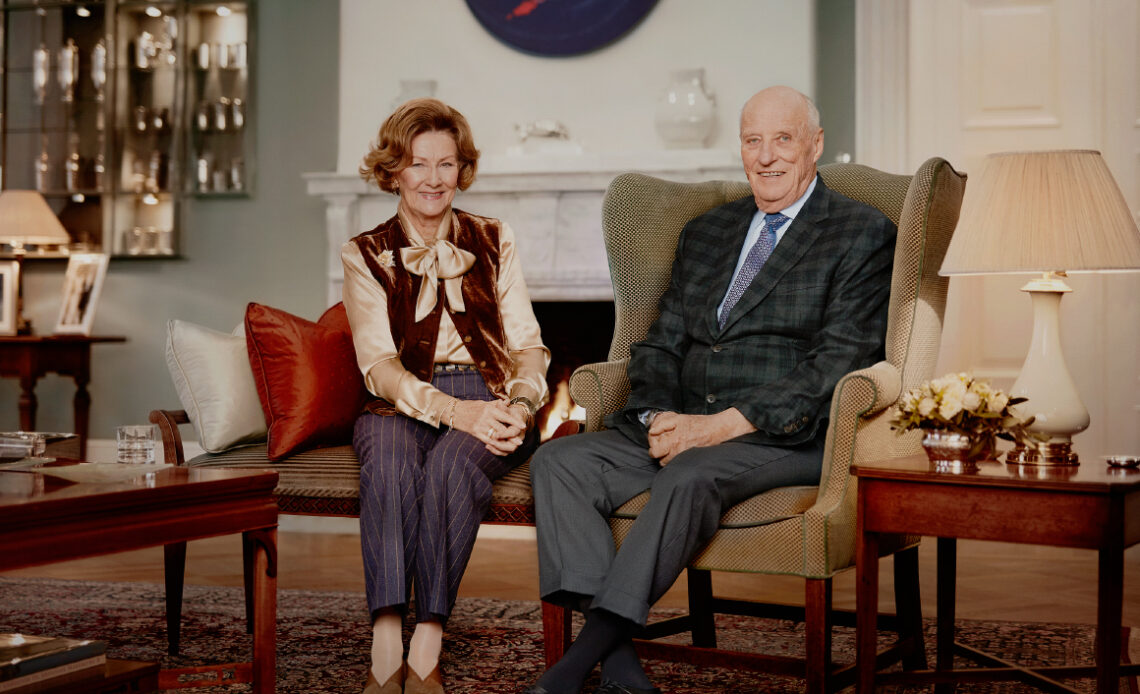
On this day, 17 January, it is exactly 31 years since King Olav V died and his son took over as Norway’s new monarch. On the evening of 17 January 1991, at 10.20pm, King Olav V died at the royal cabin, Kongsseteren, in the outskirts of the capital, Oslo. Olav was King of Norway from the time he took over from his father, King Haakon VII, on 21 September 1957 until his death on 17 January 1991.
When King Olav died at Kongsseteren outside Oslo he was 87 years old and the world’s oldest monarch. Throughout the evening and in the days that followed the death, tens of thousands flocked to Castle Square in Oslo to remember King Olav and show their support for the Royal Family. The castle square was full of flowers and candles.
The official announcement of King Olav’s death was given by the King in an Extraordinary Council of State at the Palace at midnight. On January 18, King Harald gave his first speech as monarch, in which he remembered his father and asked for the support of the people in the deed that now lay before him.
King Harald later said that he thought his father, King Olav, was the first victim in the Gulf War. King Olav died of a heart attack while watching an extra news program on CNN on TV about the Gulf War. In an interview with TV2 in 2001, King Harald said that King Olav thought the Gulf War was the beginning of the Third World War and was so scared that he had a heart attack. King Harald was present when it happened and revealed that King Olav was annoyed with the Norwegian government which could not better inform him about what happened shortly before he died.
King Harald has on several occasions expressed his gratitude for the support of the people. In King Harald`s New Year’s speech in 1991 His Majesty said: “The great participation and all the sympathy we received, gave a strong feeling that the Norwegian people stood with us in a common grief. The condolence protocols from all over the country, together with the lights and all the greetings from the castle square warmed and comforted us in the most difficult days.”
In the days following the king’s death, it was not uncommon to see people crying in the streets as they passed the castle. Young children drew pictures for King Olav which they put in front of the castle. People said they could not understand that King Olav was gone. He had somehow always been there. Since 1905 he had been Norwegian Crown Prince and since 1957 King.
When a Norwegian monarch passes away, the next takes over at the same moment. Hence the expression “The King is dead – Long live the King”. Nevertheless, the transition is also accompanied by a number of ceremonial elements, of which the King’s oath to the Constitution is the most important. This took place on 21 January. King Harald and Queen Sonja also chose, like King Olav, to be blessed by the church in Nidaros Cathedral on June 23 1991.
After the blessing, the royal couple completed a ten-day round trip in southern Norway, and the following year a 22-day trip in the four northernmost counties. The custom of such a journey in connection with a royal accession dates back to the Middle Ages, when the kings allowed themselves to be praised in the various courts around the country.

